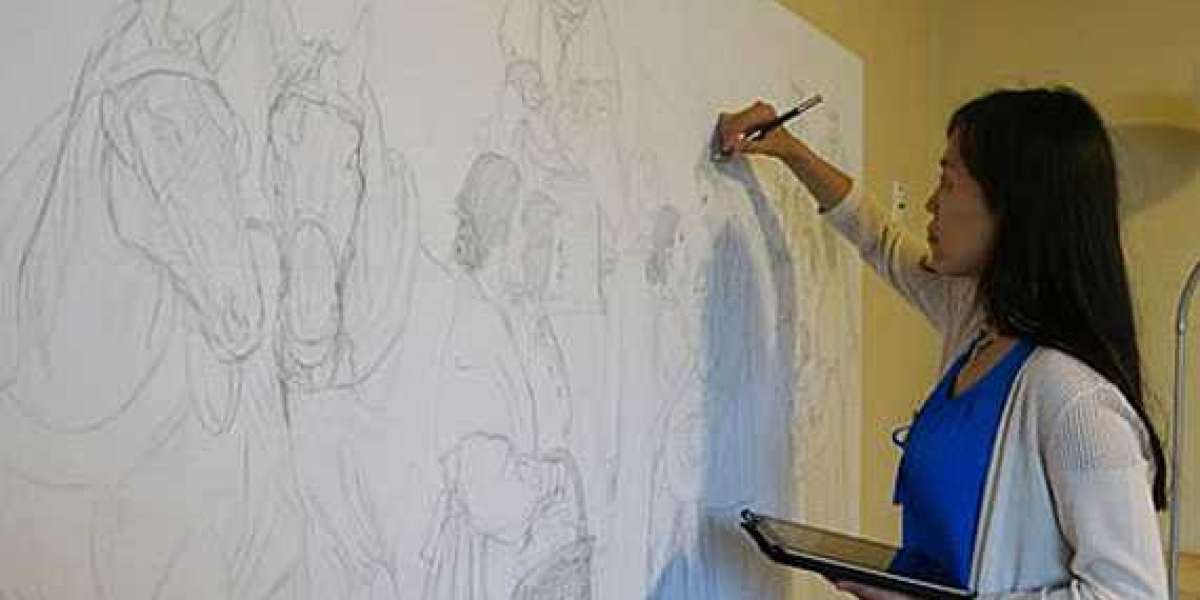Traditional Chinese art is not only an aesthetic endeavor; it is a profound reflection of the country’s long and rich history, philosophy, and cultural evolution. Throughout the centuries, the intricate forms and symbolic meanings in Chinese artworks have served as a window into the ancient mindset, beliefs, and customs of the people. From painting to calligraphy, sculpture to ceramics, traditional Chinese art is a treasure trove of wisdom and stories that continue to captivate people around the world.
The beauty of traditional Chinese art lies in its ability to blend the spiritual, the intellectual, and the creative, producing masterpieces that resonate deeply with both their creators and viewers. But what makes it truly timeless?
1. The Cultural Significance of Traditional Chinese Art
The roots of traditional Chinese art are deeply entwined with the country’s cultural and philosophical traditions. Confucianism, Taoism, and Buddhism have each played a significant role in shaping the direction of Chinese art over thousands of years. The purpose of art was often viewed as a means to cultivate virtue, depict the natural world, and reflect the inner self. Chinese artists were trained not just to replicate nature but to convey their understanding of its deeper truths.
At the heart of Chinese art is the concept of harmony between man and nature. This reflects the Taoist belief that humans should live in balance with the world around them. The famous landscapes in Chinese painting are not mere depictions of physical scenery but embody deeper philosophical ideas, such as the Taoist principle of “wu wei” (effortless action), where the artist’s hand moves with the natural flow of the universe.
2. Key Forms of Traditional Chinese Art
Traditional Chinese art is not limited to one medium; it encompasses a wide variety of styles, each with its unique purpose and cultural significance.
Chinese Painting: One of the most famous and revered forms of traditional Chinese art, Chinese painting is distinguished by its use of brush and ink. The brushwork, fluidity of line, and the careful attention to brushstroke direction are pivotal to capturing the essence of the subject matter. The themes of Chinese painting often revolve around nature, mythology, and history, but it also serves as a medium for expressing personal emotions and philosophical musings. Artists like Qi Baishi, Zhang Daqian, and Xu Wei are considered pioneers in the field, each bringing their own flavor to the tradition while maintaining its classical roots.
Chinese Calligraphy: Calligraphy is often considered as important as painting in Chinese artistic traditions. The written word was viewed as an art form, and the brushstrokes of a calligrapher were seen as an extension of their personality and moral character. Master calligraphers could convey emotion and wisdom through the grace of their characters, and different styles of calligraphy, from the flowing cursive to the bold seal script, each held a unique aesthetic and cultural significance.
Chinese Sculpture: Chinese sculpture, from the ancient terracotta warriors to Buddhist statues, reveals the ingenuity and spirituality of the people. The skillful crafting of stone, clay, and metal into detailed figures was not only an artistic pursuit but also an act of reverence. Each sculpture tells a story, whether it’s of a revered emperor, a mythical creature, or a religious figure. The grace and serenity embodied in these statues reflect the balance of the physical and spiritual world in Chinese culture.
Chinese Ceramics: Chinese pottery and porcelain have a long and distinguished history, with each dynasty contributing unique styles and innovations. From the early pottery of the Neolithic period to the famous blue-and-white porcelain of the Ming Dynasty, ceramics have played a major role in Chinese culture. These pieces, whether functional or decorative, are often beautifully adorned with symbolic motifs that carry deep meanings.
Chinese Silk Art: The artistry of silk in China dates back over 2,000 years. The making of silk and its transformation into elaborate textiles for robes, tapestries, and banners was considered an art form that required great skill. Silk art often featured intricate patterns, including dragons, phoenixes, and flowers, which conveyed important cultural symbolism.
3. The Symbolism in Traditional Chinese Art
One of the most captivating aspects of traditional Chinese art is its use of symbolism. Chinese artists often incorporated hidden meanings within their works, where colors, shapes, and creatures carried specific connotations.
Dragons and Phoenixes: These mythical creatures are symbols of power, strength, and grace. Dragons are often associated with imperial power, while the phoenix symbolizes rebirth and immortality.
Flowers: Each flower in Chinese art has its own symbolic meaning. For example, the lotus represents purity, while the peony signifies wealth and prosperity. The plum blossom, which blooms in winter, symbolizes perseverance and hope.
Animals: Various animals in Chinese art have specific meanings, often drawn from folklore and mythology. The tiger represents bravery and strength, while the crane symbolizes longevity and good fortune.
These symbols were not just decorative; they were deeply embedded in the culture’s values and beliefs. Art, therefore, was not just a means of visual expression but a conduit for communicating ideas and virtues that were central to Chinese identity.
4. Philosophical Underpinnings in Traditional Chinese Art
Chinese art is more than just a visual experience; it is intertwined with the philosophical and ethical teachings that have shaped Chinese society for millennia. The teachings of Confucianism, Taoism, and Buddhism can be found woven throughout the forms and techniques of traditional art.
Confucianism: This philosophy emphasized order, morality, and the importance of relationships. It influenced the way Chinese art depicted the human form, especially in its portrayal of figures in formal or idealized poses.
Taoism: The Taoist belief in living harmoniously with nature is reflected in the landscapes and the naturalistic forms found in Chinese art. The focus on simplicity, balance, and fluidity in the artworks is a direct manifestation of Taoist principles.
Buddhism: Buddhist influences are apparent in the serene and contemplative nature of many traditional Chinese artworks, especially sculptures and paintings. The emphasis on the inner life and enlightenment can be seen in the peaceful, meditative figures of Buddhist deities.
5. How Traditional Chinese Art Continues to Inspire
Despite its ancient roots, traditional Chinese art continues to inspire contemporary artists, both in China and across the world. Many modern Chinese artists draw on the techniques and philosophies of traditional art forms while blending them with more contemporary styles. This fusion of the old and the new has given rise to a dynamic and evolving art scene that reflects China’s growing global influence.
Furthermore, Chinese art is increasingly appreciated and celebrated worldwide. Museums, galleries, and art collectors continue to show great interest in preserving and promoting traditional Chinese art. The global fascination with Chinese culture has only amplified its relevance, making traditional Chinese art not only a national treasure but an international one.
Final Thoughts
Traditional Chinese art represents a profound and lasting legacy that continues to captivate audiences across generations. Its unique ability to weave together artistic expression, philosophical thought, and cultural heritage has ensured its place in the heart of global art history. As we explore the diverse forms of Chinese art, from painting to ceramics, sculpture to calligraphy, we come to understand not just the technical skill involved but the rich cultural narrative embedded within each work. By continuing to appreciate and study these artistic traditions, we are able to preserve and honor the timeless beauty of traditional Chinese art for future generations.







